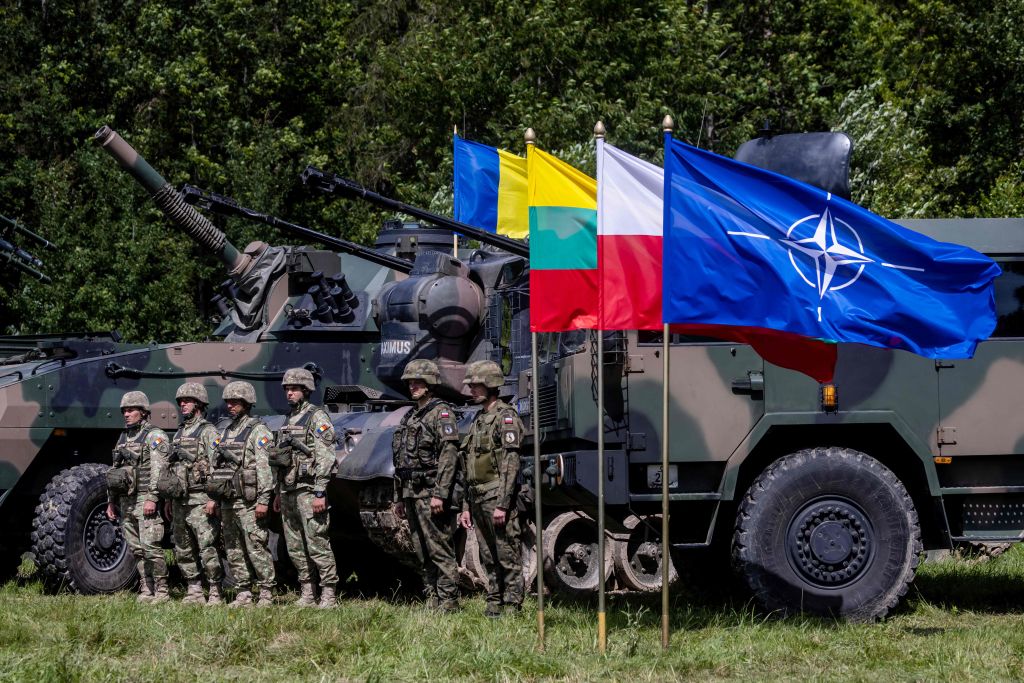
While the conflict in Ukraine is mostly concentrated in the east along the country’s border with Russia, the borders of NATO members to Ukraine’s north and west are increasingly being tested. Mercenaries from Russia’s Wagner Group have moved into Belarus, and Russia has been striking Ukrainian port facilities on the left bank of the Danube, just across the river from Romania.
This week, I travelled by car from Warsaw to Vilnius, the Lithuanian capital, through the Suwalki Gap, the 100-kilometre-long border between NATO countries Poland and Lithuania that is sandwiched between Russian ally Belarus and Kaliningrad, the Russian enclave on the Baltic Sea. The most direct route between the two cities goes through Grodno in Belarus, which would have made the trip 60 kilometres and 40 minutes shorter, but that route was closed due to increased tensions in the region.
In early July, Poland began moving more than 1,000 of its troops from the west to the Belarusian border in the east because Wagner fighters were expected to arrive in Belarus following the failed mutiny by the group’s leader, Yevgeny Prigozhin. Last Saturday, the Polish prime minister announced at a news conference that around 100 Wagner troops in Belarus had moved closer to Grodno and the Suwalki Gap.
Then, on Tuesday, Poland claimed that Belarusian military helicopters had violated its airspace, and the defence ministry announced that it was sending ‘additional forces and resources, including combat helicopters’ to the border region. While there may have been an element of political grandstanding in this move with Polish parliamentary elections to be held before the end of this year, the concern is nevertheless real.
However, the security of the Suwalki Gap is of even greater concern in Lithuania and the other post-Soviet Baltic states, Latvia and Estonia. It has been assumed that in any conflict with NATO, Russia, with cooperation from Belarus, would move quickly to occupy the short stretch of land to cut off a NATO land bridge between the Baltic states and western European NATO members.
Finland joining NATO has therefore been a huge relief to the Baltic states. Helsinki lies only 80 kilometres north of Tallin, the Estonian capital, across the Gulf of Finland and boasts a formidable navy. Once Sweden joins NATO, it will provide significant strategic depth in the area and limit Russian movements in the Baltic Sea in any future conflict, providing an alternative route for reinforcements for the Baltic states.
Kaliningrad and Belarus together comprise around half of Lithuania’s land borders, making Vilnius understandably one of Kiev’s most enthusiastic supporters. Ukrainian flags hang from apartment windows and balconies across the Lithuanian capital and the ticker on public buses alternates between the route’s destination and ‘Vilnius loves Ukraine’.
Lithuania sees the Wagner Group in Belarus as a threat and indicated this week that it would not make its border security measures public, but nor has it completely closed the Belarusian border.
Meanwhile, the Ukrainian port city of Izmail, near NATO’s European border in Romania, was hit by Russian drones on Tuesday night, damaging grain and port infrastructure and sending global wheat prices several percentage points higher as a result of concerns over supplies. Footage taken from the Romanian bank of the Danube showed how close the attack was to NATO’s borders.
While it’s extremely unlikely that Russia will directly attack NATO members, the edging of the Ukrainian conflict towards NATO borders raises other potential concerns. The first possibility is that some form of hybrid threat emerges along the Belarusian border, such as manufactured refugee flows or Wagner fighters, or otherwise unidentified ‘little green men’, breaching the border with activities that offer the Russian government plausible deniability. The other possibility is that missile or drone attacks aimed at Ukrainian territory cross over into NATO territory by mistake.
While the likelihood of significant incursions into NATO territory is very low given current scenarios, the hybrid nature of Russian actions in Georgia and in Ukraine in 2014 indicates that that is Moscow’s preferred modus operandi. The longer the Ukrainian conflict continues, the more likely it is that some breach of NATO borders will occur.
NATO must be ready to respond in a firm but measured manner. Russian President Vladimir Putin sees hesitancy in the West as weakness. The lack of a unified and strong NATO response to Russia’s 2014 annexation of Crimea and associated hybrid warfare in the Donbas directly contributed to Putin’s calculations in deciding to launch a full-scale invasion of Ukraine last year.

